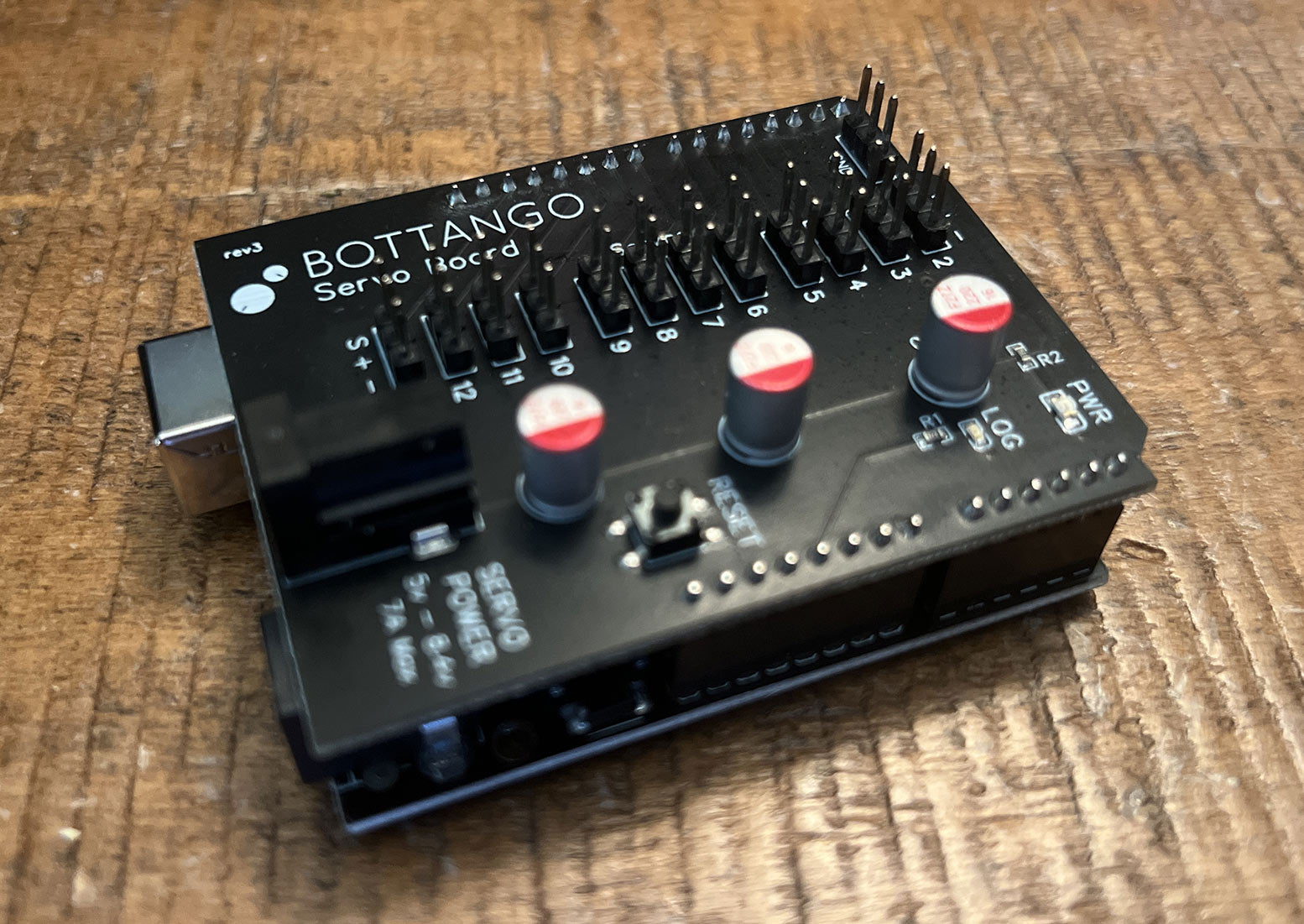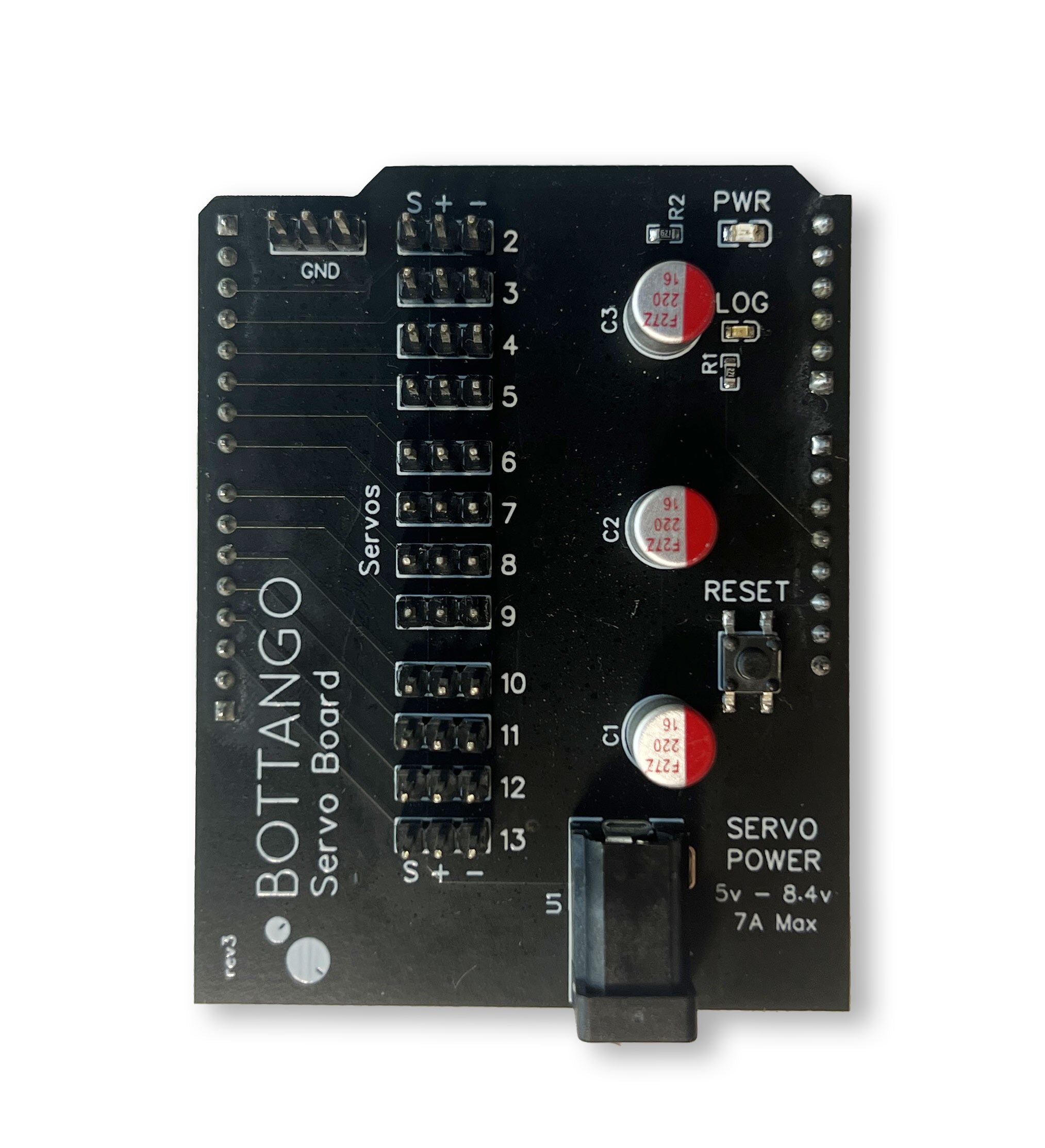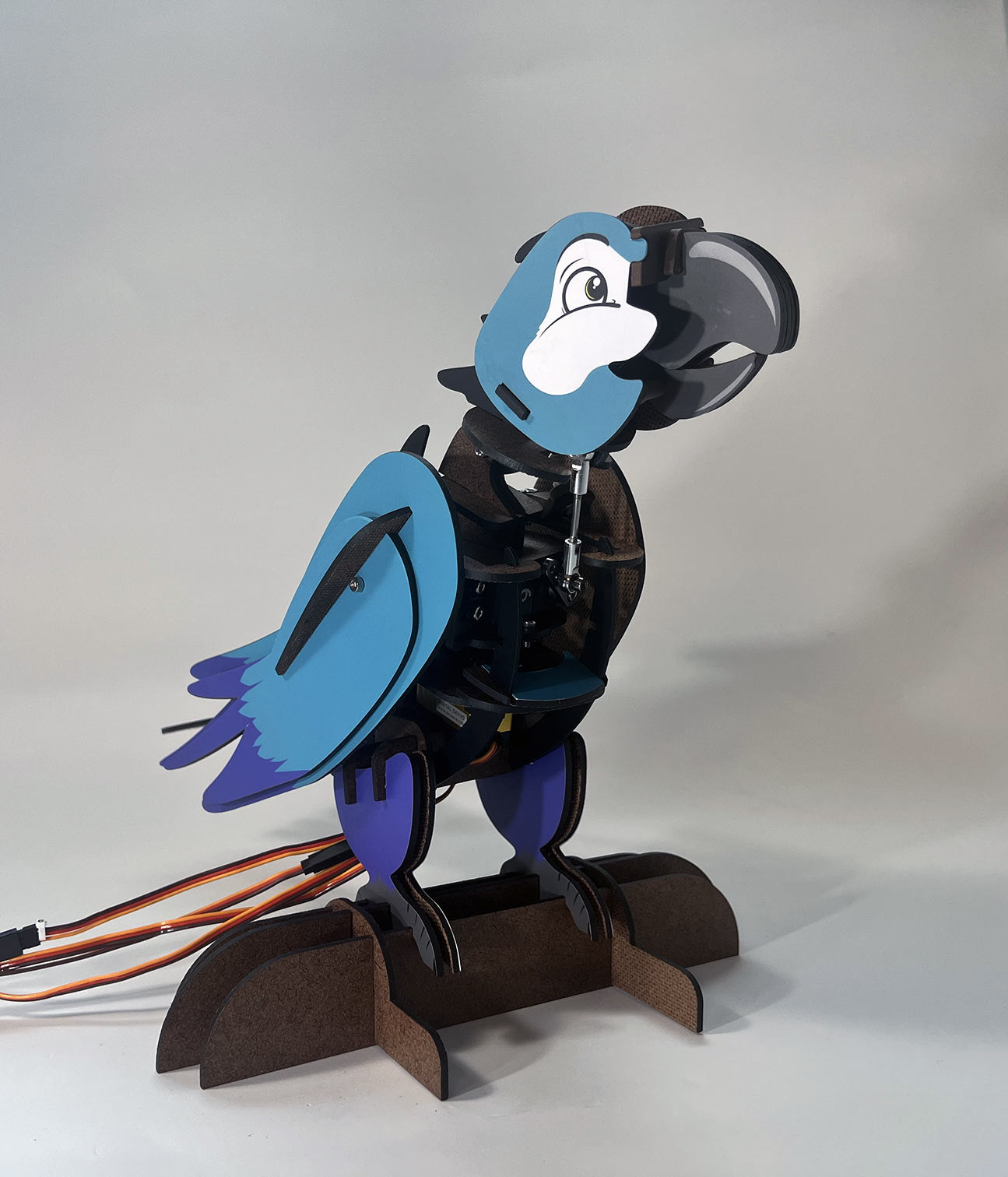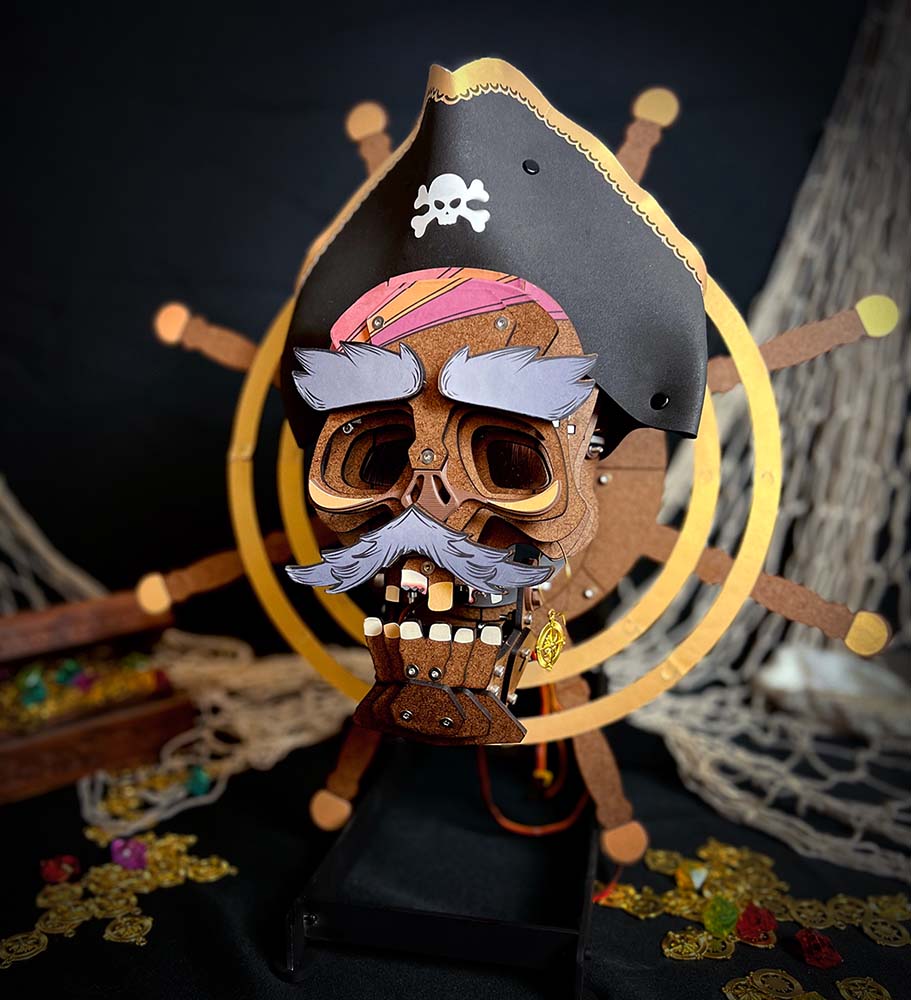

Bottango Servo Shield
This Arduino Shield compatible board will simplify powering your servos. It's the kind of product I was shocked didn't easily exist already, so I made it myself! One of the earliest hurdles to building your own servo driven robots is easily powering those servos. This shield makes it easy!
Features:
- Fits the common Arduino shield form factor, so you can plug it right in to an Arduino Uno or Mega microcontroller.
- 12 servo header pins, connected directly to digital pins 2 - 11 for routing servo signal.
- DC Barrel Jack input for easy power into your servos.
- Rated for 5v - 8.4v power input. (See power supply requirements note below. Most servos want 5v)
- Rated for current up to 7 amps.
- Three high quality polymer decoupling capacitors to help even out power spikes.
- Reset Button.
- Header pins for a reference ground, in case you want to use the shield not plugged into an Arduino.
- Status LEDs for power and logic connections.
PCB color and exact on board components may vary between revisions.
Note that with an Arduino Uno, Bottango is limited to 8 servos max per Arduino Uno. See the Bottango Discord for more details on hardware that can go above 8 servos.
You'll need to bring your own power supply:
The shield itself can take 5v - 8.4v voltage range. Up to 7 amps.
Whatever voltage you put in the servo shield will be passed right on to your servos. Most servos require 5v. Higher voltage than 5v may damage servos, be sure to check the voltage requirements of the servos you are powering if you are using any voltage above 5v.
Compatible connectors are those with the very common 5.5 mm outer sleeve diameter with 2.1 mm inner sleeve diameter.
Make sure your power supply has a positive inner pin or you'll damage your servos.
New orders usually ship in 1 - 2 business days.
If you're buying a Bottango animatronic kit, you don't need to buy a Servo Shield, our kits come with everything you need already.

How To Use The Bottango Servo Shield
If you're not sure how to use this servo shield, here's some frequently asked questions.
Why would I need this shield?
A microcontroller like an Arduino Uno is good at generating the signals that control a servo motor. However, a microcontroller board is not designed for and does not have any of the power circuits required to safely power servos.
Some people do try and power their servos directly through the circuits of the microcontroller itself, often trying to take power from the 5v pin. Unfortunately, that is a strategy doomed to failure. A single small servo can easily draw around 1,000ma of power, a single large servo at stall can draw around 3,000ma of power or more.
The 5v pin on an Arduino Uno is rated at absolute maximum to 500ma, less than half of what's needed to power a single small servo. USB cords only deliver around 500ma at most as well from a computer before the usb port is shut down, or the computer is damaged. Drawing more power than something is rated for, especially by multiple factors will lead to an unstable and unsafe setup.
So that's why this shield exists. It passes on the signals generated from the microcontroller (Arduino Uno, etc.) to your servos, and provides a robust power circuit to separately power your servos. The Bottango Servo Shield is rated to 7A (7,000ma).
What microcontrollers can I use this shield with?
This shield is designed in the Arduino Uno R3 Shield Standard. That means it matches the pinout and form factor of an Arduino Uno R3. It will also work with an Arduino Mega.
However, the servo shield is farily simple, and contains no internal logic components or IC. It is simply a passthrough of the output pins of the connected microcontroller and a robust power circuit. Using jumper wires you could easily connect the inputs of the shield to the outputs of another form factor board like an ESP32. However, if you want something to "plug in" the shield to, stick with an Arduino Uno R3 or an Arduino Mega.
What kind of power supply do I need?
You need a power supply to power the servos connected to the shield. See the instructions in the product description above for the configuration requirements. (5v - 8.4v, up to 7A. Center positive barrel jack connector)
It's worth repeating: Whatever power you plug into the shield is what will be passed directly onto your servos. If your servos need 5v power, only plug in a 5v power supply., Plugging any higher voltage power source into the shield than your servos can use will damage your servos.
Here is an example 5v5a compatible power supply on Amazon: https://a.co/d/0egJPtT
Note that Bottango LLC is not the manufacturer, distributor, etc. of this linked example power supply, and is not affiliated with or endorsing this power supply or company. It's only being provided as a reference for an example power supply with specifications that match the requirements of the Bottango servo shield.
How do I plug it into an Arduino Uno R3 / Arduino Mega
Fortunately, the Arduino Uno R3 pin layout only works one way, and the shield can only plug into the Arduino Uno R3 in the correct orientation. The power supply port of the shield will be oriented the same direction as the power supply port on the Arduino.
Does this shield also power the Arduino? Does the shield get power from the Arduino?
No to both. The purpose of this shield to have a separate power supply for your servos, removed from the power supply of your Arduino.
If you plug your Arduino into your computer, it will get it's own power from the USB cord, and you will power the shield separately from the Arduino.
If you need to use the shield with your Arduino, while the Arduino is not plugged into a computer, you will need to power the Arduino on it's own using it's power input options.
How many servos can I use at once?
There are 12 servo headers on the Servo Shield, however there are limits to the number of servos you can use at once on an Arduino Uno R3 when using Bottango's software.
Due to the limited amount of RAM available on an Arduino Uno R3 and the way Bottango works, only 8 of the servo headers can be used at once before the Arduino Uno R3 runs out of memory. You can use all 12 servo headers on a Mega or when using the shield with a more powerful board than an Arduino Uno R3.
Also note that Bottango is designed to easily handle multiple connections at once. You can easily connect two or more Arduinos to Bottango and the software will do all the work keeping things in sync.

